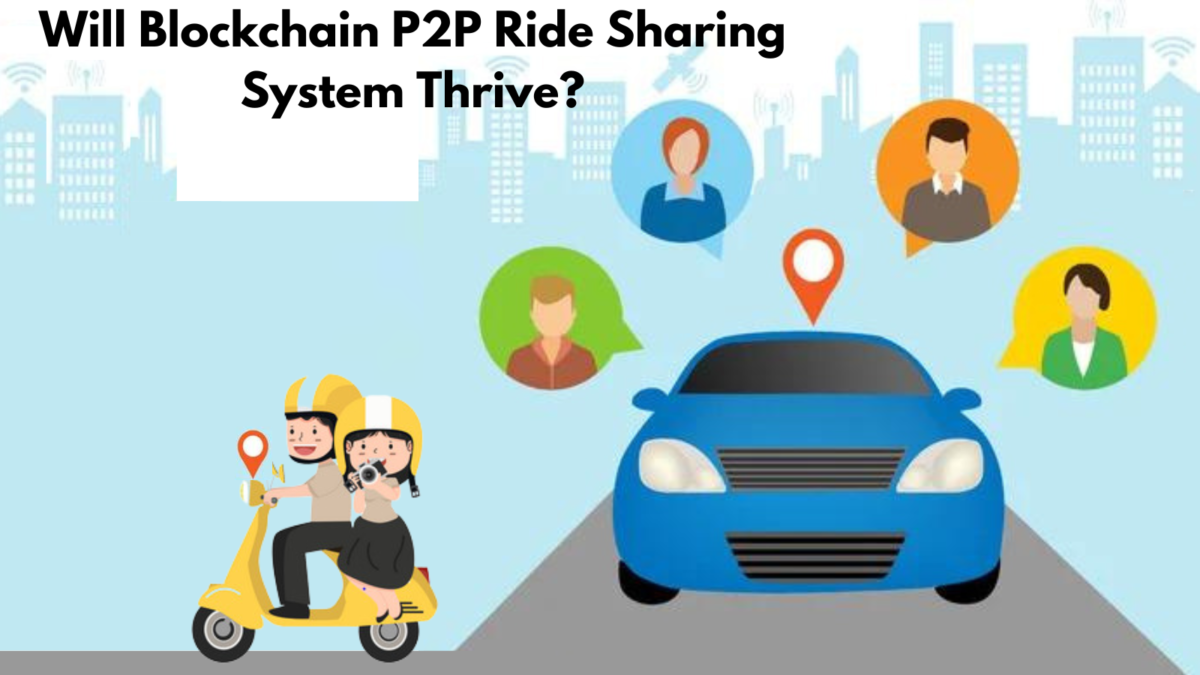Doesn’t that seem crazy how car rides have become more popular? – Uber, Ola, LYFT, GoJek, and many vehicle ride-booking applications are available. These apps also allow ride-sharing where multiple passengers can travel in the same vehicle. This facility saves time, reduces vehicle congestion, saves costs, and promotes smooth locomotion.
Individual Car Rides To Shared Rides
Ride Sharing is growing at a jet speed. However, users criticize that the ride fare gap between drivers and passengers is getting wider, i.e., the platform charges more commission. Also, some drivers face sudden pay cuts overnight without earlier notice. What is to blame here is the ‘centralized’ nature of the application. This torches the first match to use P2P ride-sharing using blockchain technology. Let us find more information about this in this blog.
What Is P2P Ride Sharing?
P2P ride-sharing is a transportation service that allows users to share their rides in their area, usually for a fee. This makes it a convenient and cost-efficient method that helps you to get around with other travelers. Moreover, accessing this facility is simple. All you need is a smartphone application or website, which is way cheaper than traditional taxi services.
The role of blockchain in Ride Sharing
Blockchain technology has the potential to revolutionize the ride-sharing industry by providing a secure and transparent platform for transactions between drivers and passengers. It also provides an immutable record of payment transactions and ensures that both parties are paid on time, eliminating the need for costly intermediaries. It is possible with the help of smart contracts that can be developed with the execution of the best smart contract development services.
Additionally, blockchain technology helps to track and store data on each ride, such as location, duration, and passenger feedback, allowing for better customer service. At the same time, blockchain-based ride-sharing can reduce fraud and ensure all parties are incentivized to use the platform.
How Does It Work?
A blockchain-based ride-sharing system is a decentralized network of users who perform transactions with each other directly and securely. Here, users are identified by a unique digital signature, and all transactions are recorded on an immutable distributed ledger. The ledger verifies the authenticity of transactions and prevents double-spending using consensus algorithms. Smart contracts ensure that all parties receive the quoted price on time. Finally, the platform uses tokens to reward drivers and passengers for providing quality service.
Benefits And Challenges Of P2P Ride Sharing
The benefits of implementing blockchain in P2P ride-sharing include high security, improved transparency, and reduced transaction costs. Smart contracts can automate the payment process, thus eliminating the need for pricey intermediaries. Additionally, blockchain provides a secure and transparent platform to store and track data, improving the overall user experience.
The main challenge in enforcing blockchain in P2P ride-sharing is scalability. As blockchain requires high computing power to process transactions and secure data, it becomes hard to achieve scalability. Blockchain has no central authority to manage the network. As a result, there are chances of disputes between users. Finally, the cost of implementation and maintenance can be expensive for some companies.
Future Of Blockchain Ride Sharing
Obviously, the future of blockchain in the ride-sharing industry is optimistic. Blockchain technology in ride-sharing results in the expansion of an egalitarian system. However, several hurdles can be overcome only with the help of a skilled blockchain smart contract development company. Finally, in a few years, these ride-sharing systems will be more scalable, offer enhanced data privacy, be more secure, and promote interoperability with the existing systems. The answer will uncover itself over a short time.


